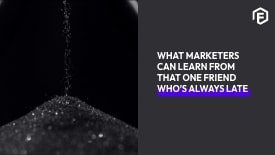We tend to get confused between “What is a brand name?” and “What is a brand?”. These are two totally different terms. A brand name is a word(s) that identify not only a product but also its manufacturer or producer. A brand is a unique design, sign, symbol, words or a combination of these, used in creating an image that distinguishes a product from its competitors. Over time, this business image becomes associated with a level of credibility, quality and satisfaction in the consumer’s mind.
Branding strategies
In building a brand, one needs a strategy. This is the action plan for putting the brand to work. There are different branding strategies, but no strategy is better than any other, as it all depends on the nature of the market and products being offered by the organisation. Some of the different branding strategies are:
- Promoting the company or organisations name where a strong brand is built around the organisation’s name.
- Attitude branding involves representing a larger feeling not automatically connected with the product or its consumption. e.g. Nike’s slogan, ‘Just do it’.
- Brand extension and brand dilution involve using a strong existing brand name to launch new or modified products. Many celebrities have launched fashion lines such as Kanye West launching his ‘PABLO’ clothing line.
- An organisation makes use of multi-brands when it deliberately launches totally new brands in apparent competition with its own existing strong brand, in order to gain a greater share of the market, to gain competitive advantage.
Brand Awareness
Brand awareness is needed as customers will not think of a brand if they are not aware of it. Brand awareness is very important, especially when launching new products and services, as well as for a company to distinguish similar products from its competitors. Ways of building brand awareness:
- Referral programs
- Car wraps
- Infographic
- Freebies
- Social focus
Benefits of a strong brand
- Strong brands assist in building a corporate image, which makes it easier to introduce new products.
- Powerful brands attract customers and build customer loyalty.
- Conveys stability.
- According to Dr. Aaker’s research, perceived quality is the single most-important contributor to a company’s return on investment (ROI), having more impact than market share, R&D, or marketing expenditures. Brand identity perceives quality that contributes to profitability, in part by enhancing prices and market share. Improve perceived quality and the organisation’s ROI will improve.
- Your brand will help reduce the amount you must spend on marketing because your firm will be a known quantity to members of your target audience.
ReferenceStardom.J.(ed.)(October 2014.)Introduction to marketingJuta,South Africa



